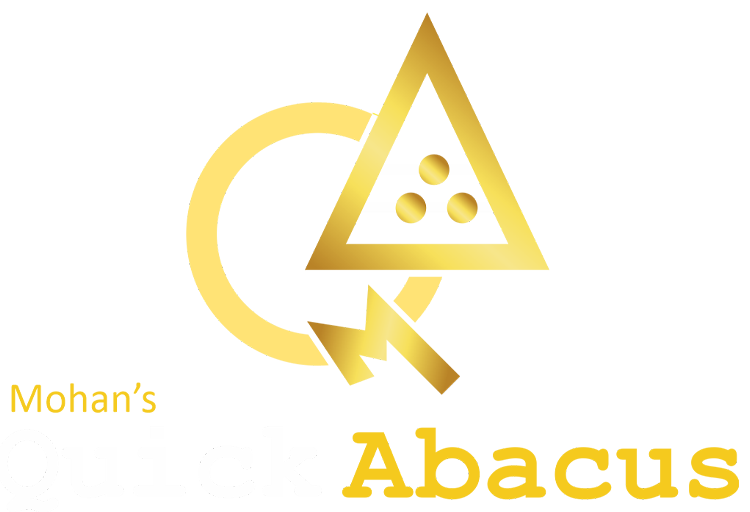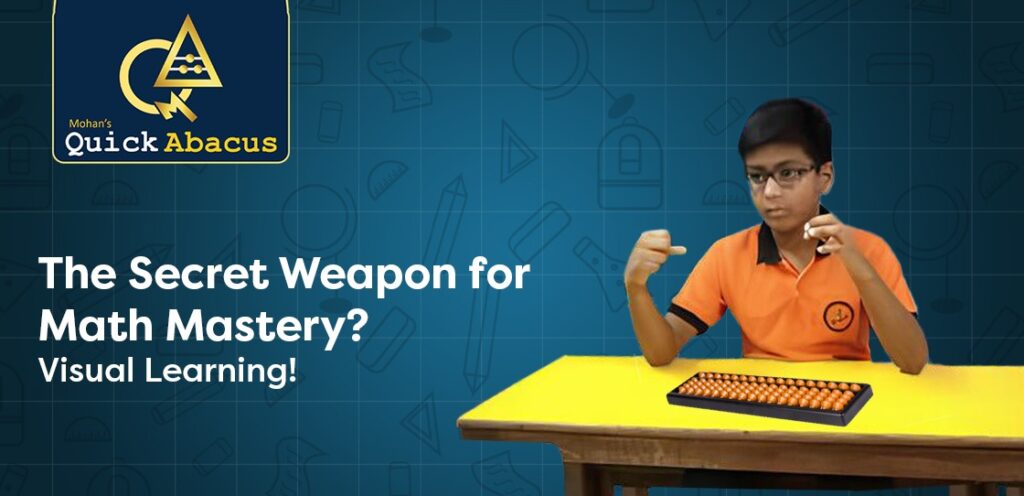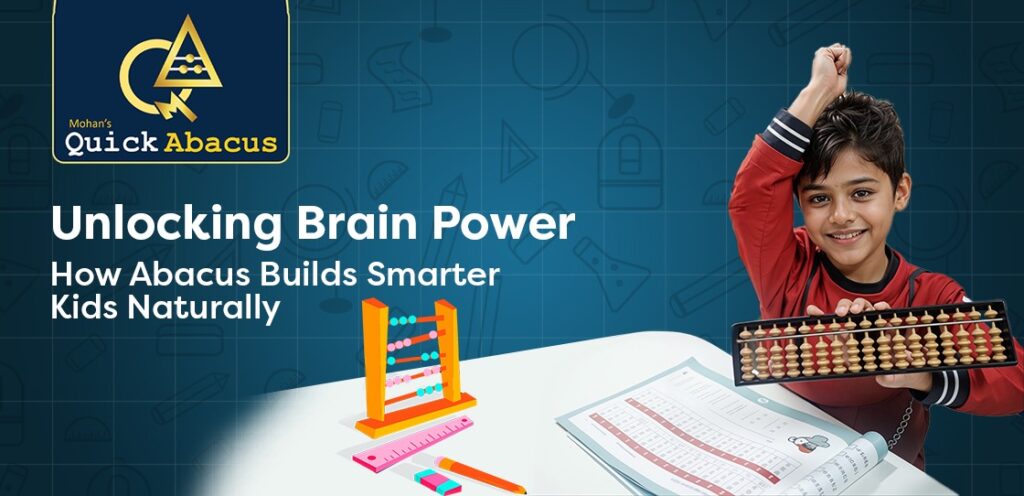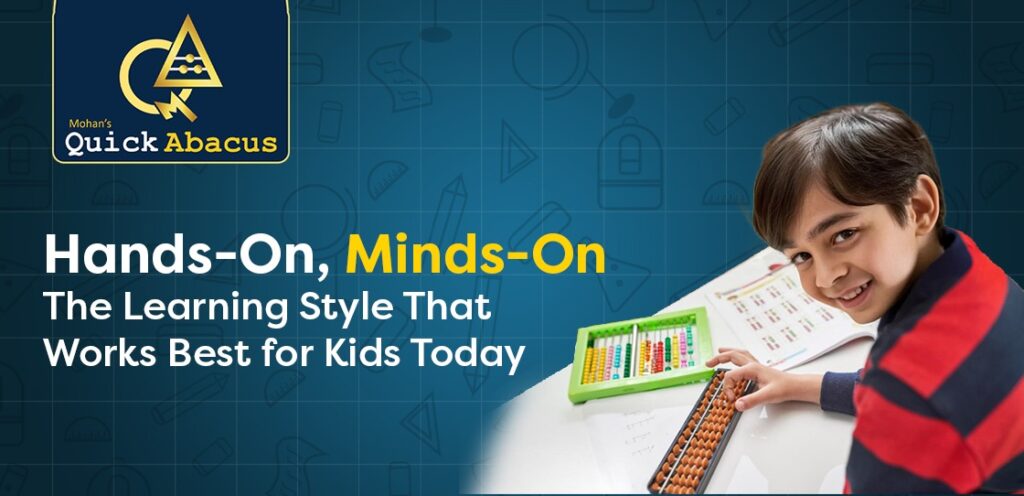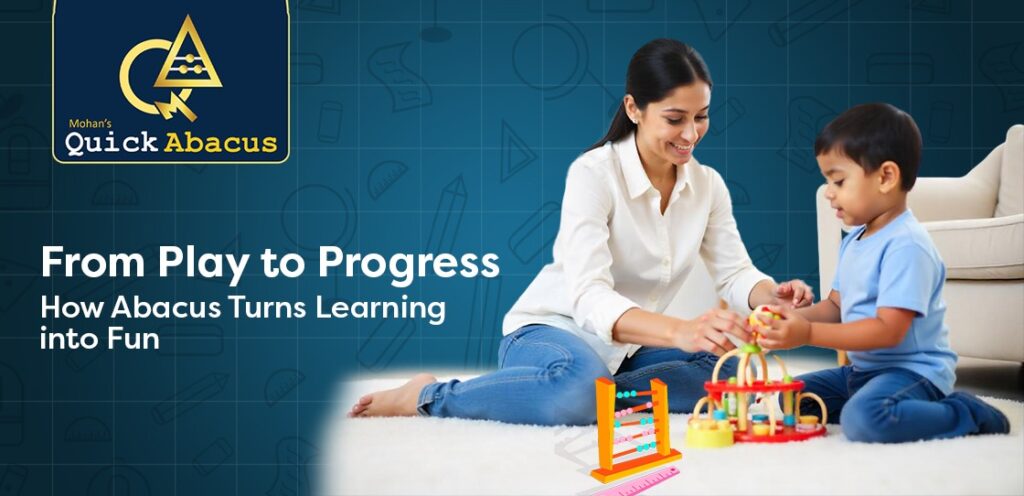Does your child struggle to grasp math concepts just by listening?
You’re not alone. Many children find traditional methods of teaching—lectures and textbooks—difficult to absorb. The truth is, most kids learn better when they can see, touch, and interact with the subject.
That’s why visual learning has emerged as a game-changing approach—especially when combined with powerful tools like the abacus. At Quick Abacus, we’ve witnessed first-hand how this method transforms math from a confusing subject into something fun, engaging, and easy to understand.
👀 What Is Visual Learning?
Visual learning is a teaching style where children process information better through visual elements like pictures, charts, diagrams, and hands-on tools. Unlike rote memorization, visual learning encourages deeper understanding by tapping into visual memory and conceptual comprehension.
Common Visual Learning Tools:
- Charts and number models
- Diagrams and graphs
- Color-coded worksheets
- Interactive tools like the abacus
📊 Why Visual Learning Supercharges Math Skills
Math can often feel like an abstract puzzle when it’s taught using numbers alone. But with visual learning, concepts become tangible and relatable. When kids can see how numbers work, they begin to grasp the “why” behind the math.
✅ Key Benefits of Visual Learning in Math:
- Simplifies complex concepts like fractions and place value
- Improves retention by forming stronger memory connections
- Reduces math anxiety by making ideas less intimidating
- Encourages problem-solving through pattern recognition
- Adds excitement with movement and interaction
🔢 The Abacus: A Visual and Brain-Boosting Powerhouse
The abacus is more than a traditional counting tool—it’s a multi-sensory device that brings numbers to life.
At Quick Abacus, we use the abacus to:
- Build powerful visualisation skills
- Develop rapid mental math ability
- Activate both the logical and creative brain
- Turn complex equations into simple bead movements
With practice, children begin to mentally picture the abacus and solve problems instantly—without pen or paper. That’s not just faster math—it’s a lifelong cognitive advantage.
➡️ Learn More: The Science Behind Abacus: How It Trains the Left and Right Brain
🧠 Beyond Math: Visual Learning's Academic Ripple Effect
The benefits of visual math learning don’t stop at calculations. Abacus learners often see improvements in:
- Focus and attention span
- Short- and long-term memory
- Overall academic confidence
- Logical thinking across subjects
Many Quick Abacus students show better performance in science, problem-solving, and reading comprehension—all thanks to a brain trained to process and retain information more efficiently.
➡️ Related: How Abacus Enhances Memory, Focus, and Cognitive Speed in Kids
🧩 Is Your Child a Visual Learner?
Does your child:
✔️ Prefer pictures over plain text?
✔️ Learn faster with videos or demonstrations?
✔️ Enjoy puzzles, building blocks, or drawing?
If yes, then abacus learning could be the breakthrough they need to excel in math—and beyond.
🎁 Try a Free Demo with Quick Abacus
At Quick Abacus, we recognize that every child learns differently. Our programs are designed for visual, auditory, and kinesthetic learners alike—ensuring math becomes something they enjoy, not fear.
👉 Register Today
Give your child the tools to master math visually—with confidence, clarity, and a whole lot of fun.
